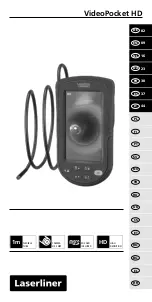
Section 12- Protein Bradford
12. Protein Bradford
The Bradford Assay is a second alternative method commonly utilized for determining protein concentration. It is often used for more
dilute protein solutions where lower detection sensitivity is needed and/or in the presence of components that also have significant UV
(280 nm) absorbance. Like the BCA method, the Bradford method requires a standard curve to be generated each time the assay is
run, before unknown proteins can be measured.
The Bradford uses the protein-induced Absorbance shift of Coomassie Blue dye to 595 nm as a measure of protein concentration. The
bound protein-dye complex is measured at 595 nm and normalized at 750 nm. A single stabilized reagent mixture containing
Coomassie Blue dye, alcohol, and surfactant in kit form is available from numerous manufacturers. Follow the respective
manufacturer’s recommendations for all standards and samples (unknowns), ensuring they are subjected to the identical conditions and
timing throughout the assay.
Sample Volume Requirement
Some proteins are hydrophobic and others hydrophilic giving rise to variable surface tension in the sample to be measured. Additionally
the presence of surfactants or detergents in reagents, such as the Bradford reagent, can significantly alter surface tension. This
occurrence can be overcome without affecting the sample’s absorbance by using a larger sample volume.
A 2 ul sample size is
recommended for protein measurements
.
Special Cleaning Requirements for Proteins
Proteins and solutions containing surfactants are known to “un-condition” the measurement pedestal surfaces so that the liquid column
does not form. If this occurs, “buff” the measurement pedestal surfaces by rubbing each with a dry laboratory wipe 15-20 times. This
will “re-condition” the surface allowing for the liquid sample column to form.
Measurement Concentration Range
On the NanoDrop
®
ND-1000 Spectrophotometer using the regular Bradford assay, unknown protein concentrations from ~100ug/ml up
to several thousand micrograms/ml (ug/ml) can be determined. The best linearity is in the 100-1000 ug/ml range. A mini-Bradford assay
covers the approximate range of 15-125 ug/ml.
Coomassie dye-dye and Coomassie dye-protein aggregates are frequently encountered in Coomassie dye-based protein assays. With
time, particulate can be observed, which can cause significant fluctuations in Absorbance readings. It is also important to note the total
analyte (protein-dye) signal at 595nm is limited to ~ 0.150 A as a result of the 1.0mm pathlength of the instrument, the Bradford
(Coomassie dye) reagent concentration, and the acidic pH. Making measurements in
triplicate
of standards and samples (unknowns)
is good practice, particularly with the limited assay signal obtained with the Bradford Assay.
Assay
Type
Approx.
Lower
Limit
Approx.
Upper
Limit
Typical Reproducibility
(minimum 5 replicates)
(SD= ug/ml; CV= %)
Regular Bradford
100 ug/ml
8000 ug/ml
sample range 100-500 ug/ml:
±
25 ug/ml
sample range 500-8000 ug/ml:
±
5%
Mini Bradford
15 ug/ml
100 ug/ml
sample range 15-50 ug/ml:
±
4 ug/ml
sample range 50-125 ug/ml:
±
5%
Bradford Kits, Protocols, and Sample Preparation
Commercial Bradford Protein kit manufacturers typically outline procedures for two different concentration ranges:
•
A regular assay – using a 50:1 reagent / sample volume ratio. To accurately prepare standards, we suggest using a minimum
sample volume of 4 ul in 200 ul of Bradford reagent (larger sample volume is preferable).
•
A mini assay– using a 1:1 reagent / sample volume ratio. To prepare sufficient volume of these 1:1 mixtures, we suggest using
a minimum of 10 ul of sample and 10 ul of Bradford reagent in a PCR tube. Using the same pipettor for both volumes will
eliminate any pipette-to-pipette accuracy differences.
In addition to the kit reagents, protein standards (e.g., BSA) for generating a standard curve are provided by the manufacturer. Follow
the manufacturer’s recommendation using standard (BSA) dilutions that cover the analytical (ug/ml) range of interest. Note: Since the
ND-1000 Spectrophotometer can measure higher protein concentrations, you may need to supply your own protein standards at higher
concentrations than provided by the manufacturer.
Unique Screen Features
View Standard Curve (F8):
selecting this button allows the user to view the standard curve at any time.
Sample Type:
choices are Reference, Standards 1-5, and Sample. The software will guide you to measure your reference, then at
least one standard before allowing measurement of samples.
Replicate #:
counter for tracking replicate number during reference and standard measurement.
12-1
















































